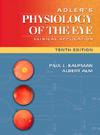Section 1 The Ocular Surface 1. Orbit 2. Ophthalmic Facial
Anatomy and Physiology 3. The Lacrimal System Section 2 Cornea
and Sclera 4. Cornea and Sclera Section 3 Lens 5. The Lens
Section 4 Optics and Refraction 6. Physiologic Optics and
Refraction, 븬?Section 5 Accommodation and Presbyopia 7.
Accommodation and Presbyopia, Section 6 Aqueous Humor
Hydrodynamics 8. Aqueous Humor Hydrodynamics Section 7 Vitreous
9. Vitreous Section 8 Retina 10. Development of the Retina 11.
Retinal Pigment Epithelium 12. Genetics and Biology of the
Inherited Retinal Dystrophies 13. Biochemistry 14.
Electrophysiology 15. Intracellular Light Responses and Synaptic
Organization of the Vertebrate Retina Section 9 Visual
Perception 16. Entoptic Phenomena 17. Visual Acuity 18. Early
Visual Processing of Spatial Form 19. Binocular Vision 20.
Temporal Properties of Vision 21. Development of Vision in
Infancy 22. Perimetry and Visual Field Testing 23. Color Vision
24. Visual Adaptation Section 10 Optic Nerve 25. Optic Nerve
Section 11 Central Visual Pathways 26. Overview of the Central
Visual Pathways 27. Activity Dependent Development of
Retiongeniculate Projections 28. The Lateral Geniculate Nucleus
29. The Primary Visual Cortex 30. Extrastriate Visual Cortex 31.
Visual Deprivation Section 12 Pupil 32. Pupil Section 13
Circulation 33. Ocular Circulation Section 14 Extraocular
Muscles/Eye Movements 34. The Extraocular Muscles 35. Three-
Dimensional Rotations of the Eye 36. Neural Control of Eye
Movements References
Companion Products
Adler Fisiologia del Ojo, 10th Edition
Author Information
By Paul L. Kaufman, MD, Professor and Director of Glaucoma
Serices, Department of Ophthalmology and Visual Sciences,
University of Wisconsin-Madison Medical School, Hospital and
Clinics, Madison, WI; and Albert Alm, MD, Professor, Department
of Ophthalmology, University Hospital, Uppsala, Sweden


